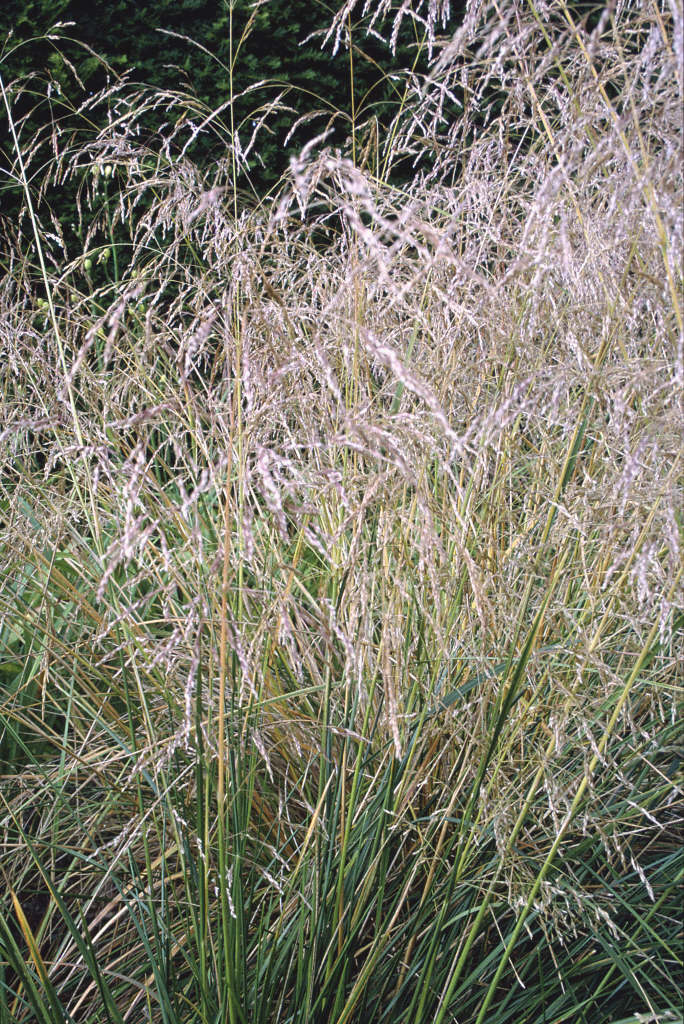Deschampsia cespitosa
tufted hair grass
An evergreen grass forming a neat tussock of narrow, leathery, dark green leaves to 60cm long, with feathery panicles of silvery-purple flowers on arching stems in summer
Synonyms
Aira cespitosaAira cespitosa var. alpina
Size
Ultimate height
1–1.5 metresTime to ultimate height
2–5 yearsUltimate spread
0.5–1 metresGrowing conditions
Moisture
Moist but well–drained, Well–drainedpH
Acid, NeutralColour & scent
| Stem | Flower | Foliage | Fruit | |
| Spring | Green | |||
|---|---|---|---|---|
| Summer | Grey Silver Purple | Green | ||
| Autumn | ||||
| Winter |
Position
- Full sun
- Partial shade
Aspect
South–facing or North–facing or West–facing or East–facing
Exposure
Exposed or Sheltered Hardiness
H6Botanical details
- Family
- Poaceae
- Native to GB / Ireland
- Yes
- Foliage
- Evergreen
- Habit
- Bushy
- Genus
Deschampsia can be deciduous or evergreen, tufted grasses with linear or thread-like leaves and open flowering panicles in summer
- Name status
Correct
- Plant range
- Europe Asia Africa
How to grow
Cultivation
Grows well in well-drained to moist but well-drained, humus-rich soils in full sun or partial shade. Prefers acid conditions
Propagation
Propagate by seed sown in situ in spring or autumn or by division in early summer
Suggested planting locations and garden types
- Prairie planting
- City and courtyard gardens
- Coastal
- Cottage and informal garden
- Wildflower meadow
- Low Maintenance
- Flower borders and beds
Pruning
Cut back old stems to the ground in early spring before growth resumes
Pests
Generally pest-free
Diseases
May be affected by a rust
Love gardening
Sign up to receive regular gardening tips, inspiration, offers and more
View our Privacy Policy
Get involved
The Royal Horticultural Society is the UK’s leading gardening charity. We aim to enrich everyone’s life through plants, and make the UK a greener and more beautiful place.

